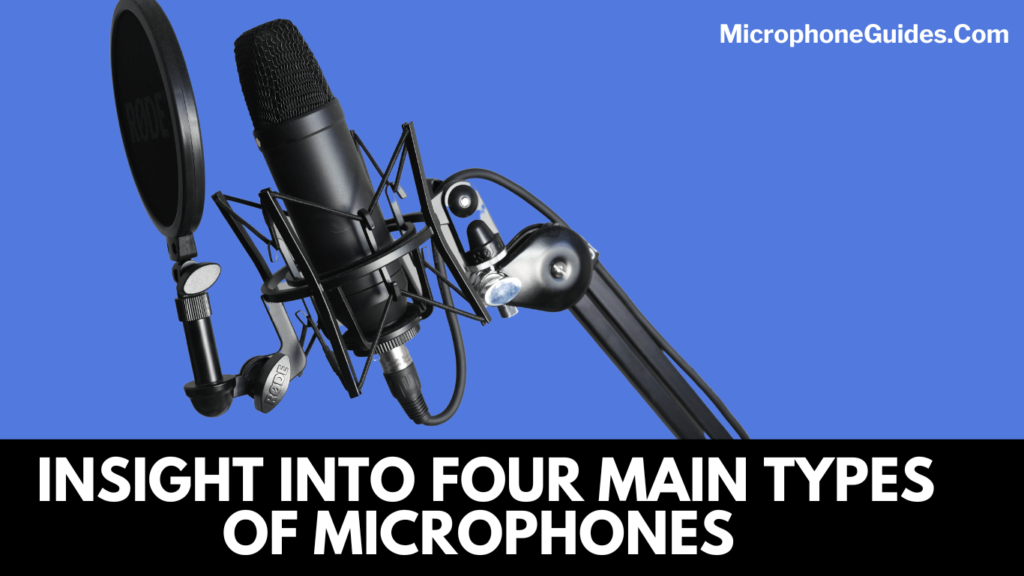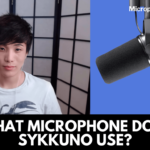Have you ever wondered how you heard the day’s message at a school assembly when you were standing feet away from the stage where the message was being delivered?
I am sure you took a few years of your childhood to understand that it is because of the microphone and speakers. By now, you have basic knowledge of microphone and how it is advantageous for mankind.
Let’s dive into the main content without any further delay!

Four Major Kinds of Microphones with Explanation
1. Omnidirectional Microphones
You must have guessed its characteristic feature only by looking at its name. As it has ‘Omni’ in it, it must be referring to something different or all. But what does ‘Omni’ has to do with the modern microphones?
Let’s make it simpler. Omni means all, and directional refers to a direction or different dimensions.
Collectively, it becomes something coming from all dimensions. Wait! Did you just hear something coming from all directions? What exactly is that something?
The answer lies in the name itself. It says ‘Omnidirectional Microphones’. Since sound waves or audio signals are directly related to microphones, so it reflects that omnidirectional microphones interpret and respond to sound waves coming from various directions.
Usage of Omnidirectional Microphones
Since these microphones absorb signals from all directions and none of the signals is dismissed, these microphones produce the most natural audio. In studios, these gadgets are used by musicians and singers for recording a symphony or song. In religious sermons, these devices are used by religious figures for making their message audible to attendees. Some content creators do use omnidirectional microphones for doing voiceover.
Limitations of Omnidirectional Microphones
Omnidirectional microphones produce natural sounds only when background noise is limited. They can’t work in crowded areas. These devices show no tolerance for background sounds.
2. Figure-8 Microphones
By looking at the name, one can conclude that there is something closely related to the number 8. What is it? Move forward to know more about it. The graphical illustration of this microphone shows a resemblance to the number 8. This is the only reason for naming it a figure-8 microphone. This device interprets and absorbs sound signals coming from the back and front. Sound signals coming from both sides (right-left) are dismissed. This means that not a very natural sound is produced. Having said that, good quality sound is produced.
Usage of Figure-8 Microphones
Figure-8 microphones are widely used for recording instrumental music. These devices also function well in stereo recording.
Limitations of Figure-8 Microphones
Since this microphone rejects the sound waves coming from both sides, it doesn’t produce a natural sound. Moreover, these mics are not good for recording voiceovers or musical compositions.
Also check: How To Fix Microphone Is Not Working On Windows 10?
3. Shotgun Microphones
These devices are also known by their nickname Line and Gradient microphones. These microphones work on the mechanism of phase cancellation. One of their features makes them closer to figure-8 microphones; these mics don’t interpret and absorb sound signals coming from both sides. It implies that natural sound is not produced when using these devices. These devices are the best pick-up for professionals who intends to record sounds from a distant place. It means that these microphones beautifully absorb low-frequency signals.
Usage of Shotgun Microphones
If you have a friend from the entertainment industry then you must be well familiar with this device as it is widely used by entertainers and content creators. In film theatres, these devices are used when the film is being projected on the screen. Musicians use these devices for recording musical pieces. The majority of singers use them for group singing during concerts as it has all the things you need in overhead mics.
Limitations of Shotgun Microphones
Shotgun microphones are not a good option for delivering speeches, songs, or addresses in live functions. As per reviews, the microphone didn’t work favorably for doing voiceovers.
4. Cardioid Microphones
Cardioid Microphones are widespread. If you are a content creator or an event organizer, you must be familiar with this equipment. These microphones interpret, detect and absorb sound signals coming from the front side. Meanwhile, dismissing all the sound signals coming from the back, left, and right. Doesn’t it sound fascinating? If you are a science student, you must know that cardiac is a medical term for the heart. From there, you can develop a relationship between the microphone and the heart. This microphone is named so because it has a point of sensitivity that resembles a heart in shape. Fascinating! Isn’t it? Since the microphone absorbs and interprets sound signals from one dimension only, it is also known as a unidirectional microphone. These handy microphones are delicate and need a professional for correct set-up and positioning.
Cardioid Microphones
Since these devices dismiss sound signals from three sides (back, left, right) and absorb sound signals only from the front, they are best for live concerts and events. It is the first option that comes to mind whenever someone talks about arranging a live event. Additionally, these devices are good to capture the sounds of musical instruments (drum kits, guitars).
Limitations of Cardioid Microphones
Since these devices don’t accept sound signals from three sides (back, right, left), they are not good for studio recordings. Apart from that, these devices are too sensitive to positioning. If you fail to position it the right way, your whole event will ruin. Next time you use it, make sure you position it right; otherwise, be prepared for the mess it can create!
Final Statement
Microphones are common these days. Still, many people don’t know much about the types of microphones and the microphone that will work favorably for them. For that reason, this article is presented to you. Hopefully, it will clear out your confusion and give you enlightenment!
Stay connected for more knowledgeable write-ups!

It’s me Brian Baldree professional sound engineer. I love to write about microphones, headphones, and musical instruments and review it’s quality.









